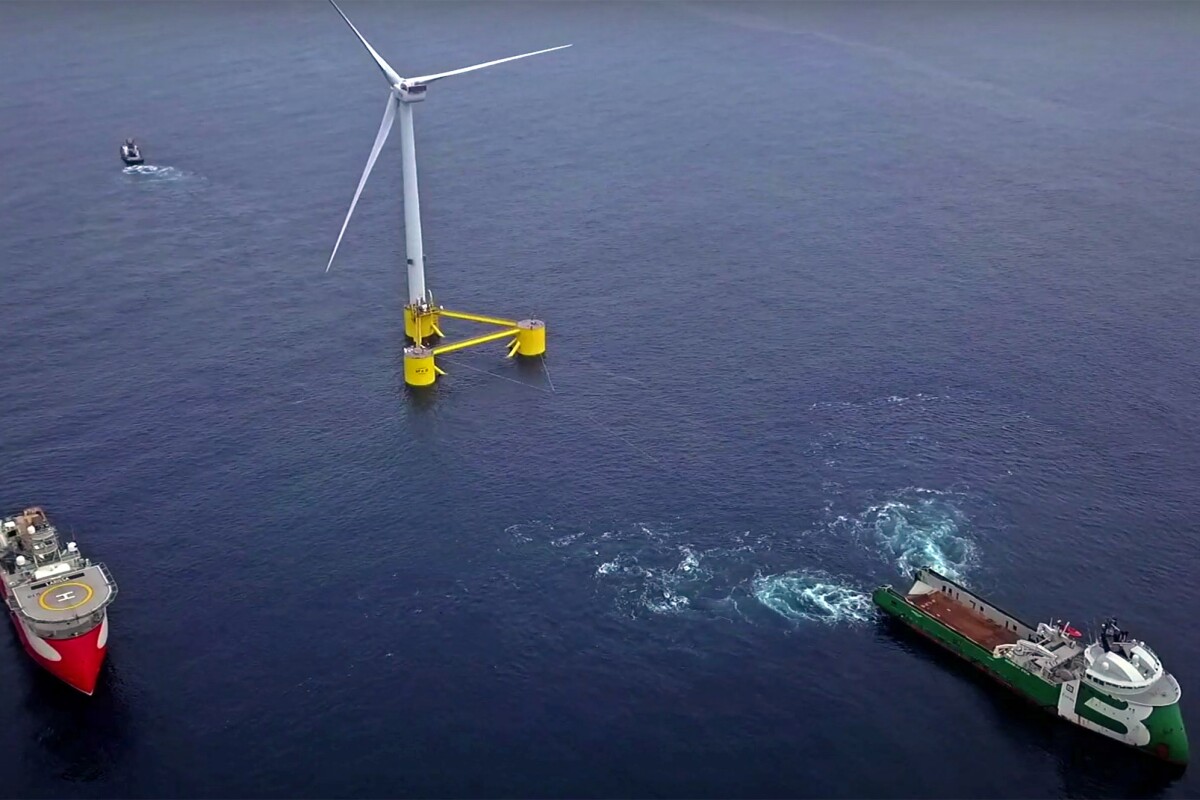Surpassing Expectations: First Semi-Submersible Floating Wind Farm

Windplus
The WindFloat Atlantic project, the first semi-submersible floating offshore wind farm with just three turbines off Portugal’s coast, has surpassed expectations in its four years of operation. It has generated 320 GWh of electricity, enough to power around 25,000 homes annually.
Connected to the grid and operational since 2020, the wind farm consists of three floating platforms, each equipped with an 8.4-MW Vestas turbine. These semi-submerged platforms are anchored 328 ft (100 m) below the surface with chains to prevent drifting and linked to an electrical substation in Viana do Costelo, Portugal, by a 12.4-mile (20-km) cable.
In 2022, the project generated 78 GWh, with 2023 delivering an even higher output of 80 GWh.
Vestas Delivers World’s Largest Offshore Wind Turbines for WindFloat Atlantic
Vestas, renowned for its large, high-capacity turbines, supplied the WindFloat Atlantic project with turbines that have a 538-ft (164-m) diameter. The blade tips can reach speeds of 232 mph (373 km/h), producing 66,000 volts of DC power. The nacelle, weighing 375 tons (340 tonnes), makes it the largest offshore wind turbine globally.

Windplus
Advantages of Semi-Submersible Floating Wind Farms in Deep Waters
Semi-submersible floating wind farms have the distinct advantage of being deployable in waters too deep for conventional bottom-fixed turbines, which are only practical in depths of around 150-200 ft (50-60 m). As distance from shore increases, wind conditions tend to be stronger and more stable, allowing these turbines to generate wind power more efficiently than those on land. The partially submerged, three-pronged platforms, equipped with active ballast systems, provide greater stability in rough seas, further enhancing their efficiency.

Windplus
Between 2011 and 2016, the WindFloat Atlantic project deployed a 2-MW prototype at sea, where it generated electricity continuously for five years. It withstood extreme weather, including 69 mph (111 km/h) winds and 55-ft (17-m) waves, demonstrating its durability and leading to the full-scale 25-MW installation.
In 2023, the system faced an even harsher storm with 86-mph (139-km/h) winds and 65-ft (20-m) waves, further proving the resilience of this offshore power-generating technology.
Read the original article on: New Atlas
Read more: Sea-Bed Air Batteries Offer Affordable, Long-Term Energy Storage










